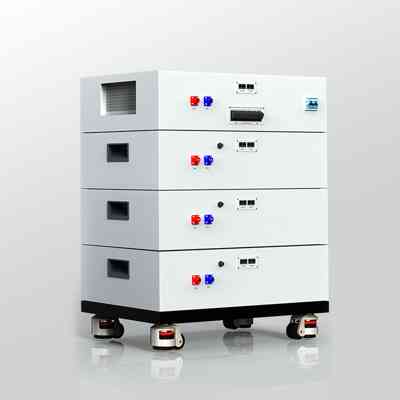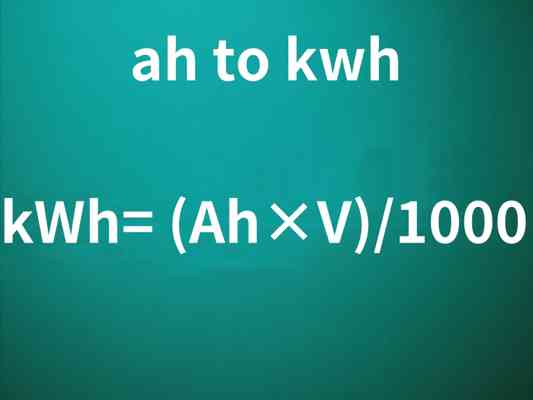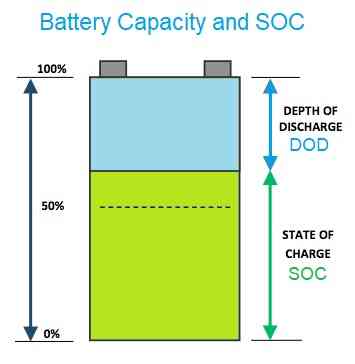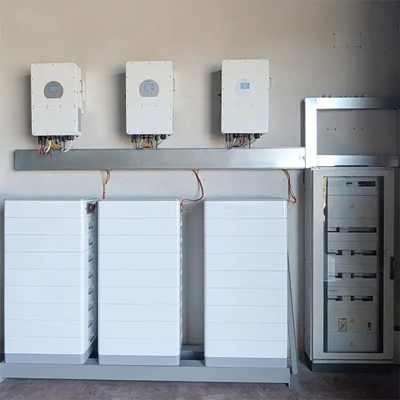Vilken kapacitet har staplingsbara litiumbatterier?
Förvirrad av alternativ för energilagring? Skrymmande batterier är ett krångel. Stapelbara litiumbatterier erbjuder en flexibel, modern lösning för dina energibehov.
Stapelbara litiumbatterier sträcker sig vanligtvis från 2.5 kWh till 10 kWh per modul. Den totala systemkapaciteten är flexibel; du bara staplar fler enheter. En vanlig installation för ett hem kan vara 10 kWh, men system kan lätt skalas upp till 40 kWh eller mer.

Jag har sett många kunder dra nytta av denna modulära design. Det förändrar hur vi närmar oss energilagring. Men "kapacitet" betyder mer än bara ett nummer. För att verkligen förstå om dessa batterier är rätt för dig, vi måste titta närmare på vad kapacitet verkligen betyder i den verkliga världen.
Hur ska vi förstå batterikapacitet?
Gör batteritermer som kWh, ah, och spänning förvirrar dig? Denna förvirring kan leda till att man köper fel system. Låt oss förtydliga dessa grundläggande enheter just nu.
Kilowattimmar (kWh) är det viktigaste kapacitetsmåttet. Den talar om för dig den totala mängden energi som batteriet kan lagra och använda. Förstärkare (ah) åtgärder avgift, men du måste också känna till spänningen för att förstå den totala energin.

När jag pratar med kunder, oavsett om de är husägare eller grossister, det första vi måste reda ut är kapacitetens språk. Det är lätt att gå vilse, men det är enkelt när det bryts ner.
Viktiga kapacitetsvillkor
Vi ser vanligtvis två huvudbetyg på ett stapelbart lifepo4-batteri: kilowattimmar (kWh) och amperetimmar (ah). De är olika. kWh är det viktigaste talet för dig. Den mäter total energi. Tänk på det som storleken på din bränsletank. A 5 kWh batteri kan leverera 1 kilowatt effekt för 5 timmar.
ah (Förstärkare) mäter den elektriska laddningen. Det säger dig hur många elektroner, men inte hur snabbt eller hur svårt de rör sig. För att få hela energibilden, du behöver spänning.
Varför kWh betyder mest
Enligt min erfarenhet, fokus på kWh förenklar allt. Det ger direkt svar på frågan: "Hur länge kan det här batteriet driva mitt hem?" När vi designar system på GYCX Solar, vi börjar med din dagliga kWh-användning.
Här är ett enkelt sätt att jämföra dessa termer:
| Kalla | Vad den mäter | Enkel analogi | Varför det betyder något |
|---|---|---|---|
| Spänning (V) | Elektrisk "Tryck" | Vattentryck i ett rör | Bestämmer systemkompatibilitet. |
| Nuvarande (A) | Elektrisk "Flöde" | Vattenflödeshastighet | Mäter hur snabbt energin rör sig. |
| Förstärkare (ah) | Laddningslagring | Storleken på en vattenflaska (liter) | Används i tekniska specifikationer. |
| Kilowattimme (kWh) | Total energi | Totalt vatten du kan använda | Det här är vad du betalar för! |
A 100AH stapelbart batteri pack på 48V rymmer 4.8 kWh ($100 \gånger 48 = 4800 \text{ Wh}$). Ett 100Ah batteri vid 12V håller bara 1.2 kWh. Det är därför det är missvisande att bara titta på Ah. Kontrollera alltid kWh.
Vad påverkar den faktiska kapaciteten på staplingsbara litiumbatterier?
Verkar ditt batteris verkliga kraft lägre än etiketten? Det är frustrerande när systemet inte lever upp till förväntningarna. Låt oss titta på vad som påverkar den siffran.
De tre huvudfaktorerna är urladdningsdjup (DoD), temperatur, och batteriets ålder (kretsloppsliv). En hög DoD (användning 100% av batteriet) och extrema temperaturer kommer att minska den faktiska användbara kapaciteten och förkorta batteriets livslängd.

Jag berättar alltid för mina kunder att ett batteris specifikationer bara är utgångspunkten. De användbar kapacitet är det som är viktigt för ditt hem eller företag. Flera faktorer förändrar denna siffra.
Urladdningsdjup (DoD)
Det här är den stora. DoD är hur mycket av batteriets totala energi du använder på en gång. Litiumbatterier (som LFP) är bra eftersom de har en hög DoD, ofta 90% eller till och med 100%. Detta betyder a 5 kWh batteri ger dig nästan 5 kWh användbar energi. Äldre blybatterier? De hade ofta en 50% DoD. Du behövde en 10 kWh batteri att få 5 kWh användbar effekt. Detta är en stor fördel för staplingsbara litiummodeller.
Temperatur
Batterier är som människor; de har en "komfortzon." Väldigt kallt väder (under 0 ° C) kan tillfälligt minska kapaciteten och förmågan att ladda ur ström. Mycket varmt väder (över 40°C) kan vara värre, eftersom det påskyndar åldrandet och försämrar batteriets hälsa permanent. Bra system har ett batterihanteringssystem (BMS) att skydda sig mot detta.
Ålder och cykelliv
Varje batteri blir gammalt. "Cykellivet" är antalet fulla laddningar/urladdningscykler ett batteri klarar av innan dess kapacitet sjunker avsevärt (vanligtvis till 80% av nya). Stapelbara kvalitetsbatterier erbjuder tusentals cykler. Ett 6000-takts batteri, cyklade en gång om dagen, kan hålla över 15 år. Denna livslängd är en nyckelfaktor för din avkastning på investeringen.
Var kan man använda stapelbara litiumbatterier?
Behöver du ström till ditt hem, företag, eller något annat? Att hitta rätt passform är svårt. Stapelbara batterier är bra eftersom de anpassar sig till många användningsområden.
Dessa batterier är perfekta för bostadshus (rutnätsbunden eller off-grid) och små till medelstora företag. De är också bra för grossister som behöver ha ett flexibelt lager. Deras modulära design passar många olika energikrav.

Det bästa med stapelbara batterier är deras flexibilitet. Jag har designat system för alla typer av klienter som använder dessa moduler.
Bostadsanvändare
Detta är den vanligaste användningen jag ser. En husägare kan börja med en 5 kWh-modul. Detta räcker för att driva viktiga belastningar under ett avbrott eller för att lagra solenergi från dagen till användning på natten (detta kallas "tidsförskjutning"). Senare, om de lägger till en elbil eller en luftkonditionering, de kan bara lägga till en till 5 kWh-modul. Inget behov av att byta ut hela systemet. Denna "betala-som-du-växer" modellen är mycket populär.
Kommersiella och industriella företag
För småföretag, tillförlitlighet är nyckeln. En restaurang eller kontor har inte råd att tappa ström. Stapelbara batterier, ofta skalas upp till 30 kWh eller 50 kWh, tillhandahålla omedelbar backup. De hjälper också företag att hantera "peak shaving"." Det betyder att de använder batteri under de dyraste tiderna på dygnet, skära ner höga elräkningar.
Grossister och installatörer
Mina grossistpartners älskar dessa. Istället för strumpa 10 olika batteristorlekar, de kan lagra en eller två stapelbara modultyper. Sedan, de kan bygga en 5 kWh, 10 kWh, 15 kWh, eller 20 kWh-system för sina installatörer. Det förenklar deras lager och logistik. Som leverantör, vi ser till att tillhandahålla produkter som denna som är vettiga för våra partners.
Vilka är de största fördelarna med stapelbara litiumbatterier?
Är en stor batteriinvestering som gör dig nervös? Du vill inte välja fel teknik. Stapelbara batterier löser många gamla problem med sin moderna design.
De främsta fördelarna är skalbarhet (lägga till kapacitet senare), enkel installation (modulerna är lättare och ansluts enkelt), och hög effektivitet (tack vare LFP-kemi och ett bra BMS). De är också mycket säkra och har lång livslängd.

När kunder frågar mig varför jag rekommenderar stapelbara batterier så ofta, Jag pekar på tre huvudsakliga fördelar. Vi har sett dessa fördelar i praktiken på hundratals projekt.
1. Verklig skalbarhet
Detta är den största fördelen. Din energibehov1 kommer att förändras. Med gamla batterier, du var tvungen att överdimensionera ditt system från dag ett, vilket var dyrt. Eller, du var fast om du behövde mer kraft. Med stapelenheter2, du köper det du behöver nu. Du kan lägga till fler moduler en, tre, eller fem år senare. Denna flexibilitet är perfekt för växande familjer eller företag.
2. Enkel installation
Jag har hanterat gamla, tunga batterier. En enda enhet kan vara 100 kg eller mer. Stapelbara moduler är olika. Varje modul är mindre och lättare (kanske 25-50 kg). En eller två personer kan hantera installationen. De har ofta plug-and-play-kontakter. Detta minskar arbetstiden och installationskostnaderna, vilket är en vinst för både husägaren och installatören.
3. Säkerhet och prestanda
De flesta stapelbara batterier använder idag Litiumjärnfosfat (LFP) kemi. Detta är det säkraste, mest stabil litiumteknik. Det är inte benäget att överhettas som andra typer. De har också en mycket lång livslängd.
Här är en snabb jämförelse:
| Särdrag | Stapelbar litium (LFP) | Traditionell bly-syra |
|---|---|---|
| Skalbarhet | Excellent (Lägg till moduler) | Dålig (Byt ut hela banken) |
| Installation | Lätt (Lättare moduler) | Hård (Väldigt tung) |
| Användbar kapacitet (DoD) | 90-100% | 50% |
| Livslängd | 10-20 år | 3-7 år |
| Säkerhet | Mycket hög | Måttlig (Gas, syra) |
| Underhåll | Ingen | Hög (Vattning) |
När du tittar på detta, valet blir mycket tydligt.
Slutsats
Korrekt användning under användning kan maximera batteriets faktiska användbara kapacitet och förlänga dess livslängd. Det rekommenderas att kontrollera urladdningsdjupet (DoD) till 80%-90%, undvika långvariga 100% full urladdning. Detta säkerställer att det dagliga energibehovet tillgodoses samtidigt som det interna batterislitaget minskar. Angående omgivningstemperatur, försök att installera batteriet i ett välventilerat och torrt utrymme mellan 0-40 ℃. Förvärm på vintern när temperaturen är låg, och säkerställa korrekt värmeavledning på sommaren när temperaturen är hög. Använd skyddsfunktionerna i batterihanteringssystemet (BMS) för att förhindra påverkan av extrema temperaturer på kapaciteten.
Dessutom, regelbundet underhåll är viktigt. Även om staplade litiumbatterier inte kräver frekvent påfyllning av vatten eller annat komplext underhåll, det rekommenderas att kontrollera att modulanslutningarna är täta varje kvartal för att undvika dålig kontakt som kan leda till minskad laddnings- och urladdningseffektivitet. Årligen, få battericykelns livslängd och kapacitetsminskning testad med hjälp av professionell utrustning. Om en enskild moduls kapacitet är betydligt lägre än andra moduler, byt ut det omedelbart för att säkerställa det övergripande systemets kapacitetsbalans. Vetenskapligt urval, standardiserad användning, och enkelt underhåll gör det möjligt för staplade litiumbatterier att fullt ut realisera sina kapacitetsfördelar och uppnå en långsiktig stabil energiförsörjning.
Stapelbara batterier erbjuder flexibel kapacitet från 2.5 kWh upp, med enorma fördelar. De är smarta, skalbart val. Låt oss hitta rätt kapacitet för ditt projekt.
